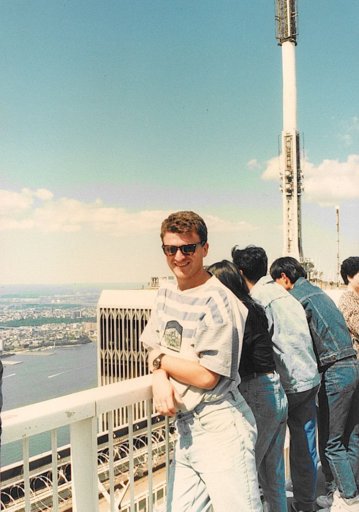Rory
Closed Account
Had an idea about how to very clearly and very easily show that the horizon isn't at eye level: take some pictures of some eyes!
You will need:
1. A camera
2. A high place with a level surface and a view to the horizon
3. A person pretty much the same height as you
4. The ability to hold a camera at eye height
5. Some fingers
Here are some examples of how this would work (though obviously not proofs, given a lack of measurements):

www.apex-foundation.org/nyc-world-trade-center-towers-in-students-pictures/

www.imgur.com/MwRkFgP

1.bp.blogspot.com/-VYb1bd0RWPI/Tm4pV41pHVI/AAAAAAAADfw/7fLefBRVg14/s1600/wtc.jpg

www.snopes.com/rumors/photos/tourist.asp
I guess there are a few possible explanations for this:
1. All these photos were taken by people significantly smaller than the person in them
2. Light has a mysterious, hitherto unknown quality that no one's previously suspected
3. The horizon is not at eye level, but actually below eye level
Like I say, these are not proofs: but they are examples of how this 'experiment' would work. What's necessary to make them 'proofs' are measurements. A camera that is verifiably at the same distance from a level surface as the subject's eyes.
NOTE: For the purpose of this experiment, the definition of "eye level" used is the one used by the flat earth believers themselves, and understood by most flat earth debunkers, rather than definitions perhaps found in art, dictionaries, marine biology, et cetera. That is:
1. "A plane perpendicular to the eye-end of a line between the centre of the earth and a point at the height of someone's eyes" (fancy term, assuming a spherical earth)
2. "A plane parallel to the ground, at the height of someone's eyes" (assuming a flat earth)
3. "The level of your eyes when you're standing up straight" (easy term)
Or, if diagrams make things more clear, this:

Source: scontent.cdninstagram.com/t51.2885-15/s480x480/e35/17076631_1908417099392585_5646269886855380992_n.jpg
And in practical terms, as seen above: "eye level" is something which can never intersect with the horizon on a spherical earth, but would come imperceptibly close to intersecting with a horizon (were it possible to have a horizon) on a flat earth, at the elevations that most people operate at.
This is why showing whether "eye level" does or does not intersect with the horizon is a key and elementary way for people who believe the earth is flat to prove or disprove that the earth is a globe.
(Discussion of how to define "eye level" can be found here.)
You will need:
1. A camera
2. A high place with a level surface and a view to the horizon
3. A person pretty much the same height as you
4. The ability to hold a camera at eye height
5. Some fingers
Here are some examples of how this would work (though obviously not proofs, given a lack of measurements):
www.apex-foundation.org/nyc-world-trade-center-towers-in-students-pictures/
www.imgur.com/MwRkFgP

1.bp.blogspot.com/-VYb1bd0RWPI/Tm4pV41pHVI/AAAAAAAADfw/7fLefBRVg14/s1600/wtc.jpg
www.snopes.com/rumors/photos/tourist.asp
I guess there are a few possible explanations for this:
1. All these photos were taken by people significantly smaller than the person in them
2. Light has a mysterious, hitherto unknown quality that no one's previously suspected
3. The horizon is not at eye level, but actually below eye level
Like I say, these are not proofs: but they are examples of how this 'experiment' would work. What's necessary to make them 'proofs' are measurements. A camera that is verifiably at the same distance from a level surface as the subject's eyes.
NOTE: For the purpose of this experiment, the definition of "eye level" used is the one used by the flat earth believers themselves, and understood by most flat earth debunkers, rather than definitions perhaps found in art, dictionaries, marine biology, et cetera. That is:
1. "A plane perpendicular to the eye-end of a line between the centre of the earth and a point at the height of someone's eyes" (fancy term, assuming a spherical earth)
2. "A plane parallel to the ground, at the height of someone's eyes" (assuming a flat earth)
3. "The level of your eyes when you're standing up straight" (easy term)
Or, if diagrams make things more clear, this:
Source: scontent.cdninstagram.com/t51.2885-15/s480x480/e35/17076631_1908417099392585_5646269886855380992_n.jpg
And in practical terms, as seen above: "eye level" is something which can never intersect with the horizon on a spherical earth, but would come imperceptibly close to intersecting with a horizon (were it possible to have a horizon) on a flat earth, at the elevations that most people operate at.
This is why showing whether "eye level" does or does not intersect with the horizon is a key and elementary way for people who believe the earth is flat to prove or disprove that the earth is a globe.
(Discussion of how to define "eye level" can be found here.)
Last edited:

